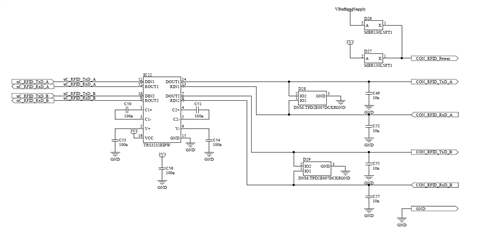Other Parts Discussed in Thread: MAX232, TRS3232
Tool/software:
I designed a PCB with a "standard" MAX232 converter, in this case the TRS3232EIPW.
Used the circuit numerous times to convert the serial RS232 signals to the uC signals.
When the PCS where tested an configured there where no faults and/or errors.
However a few years/months later we received a batch of units out of the filed from which the configuration could not be changed. Normally the interface is not used and is not connected.
After examining the units with the serial problem we see all units have similar problems with the TRS3232 IC, it has black exploded pins and is locally overheated.
The pins of the voltage doubler or negative buffer with attached capacitors always seem to be affected.
After blowup negative voltage is no longer available en sending fails (no V-) but receiving remains working.
Any ideas why this IC fails on this board?


